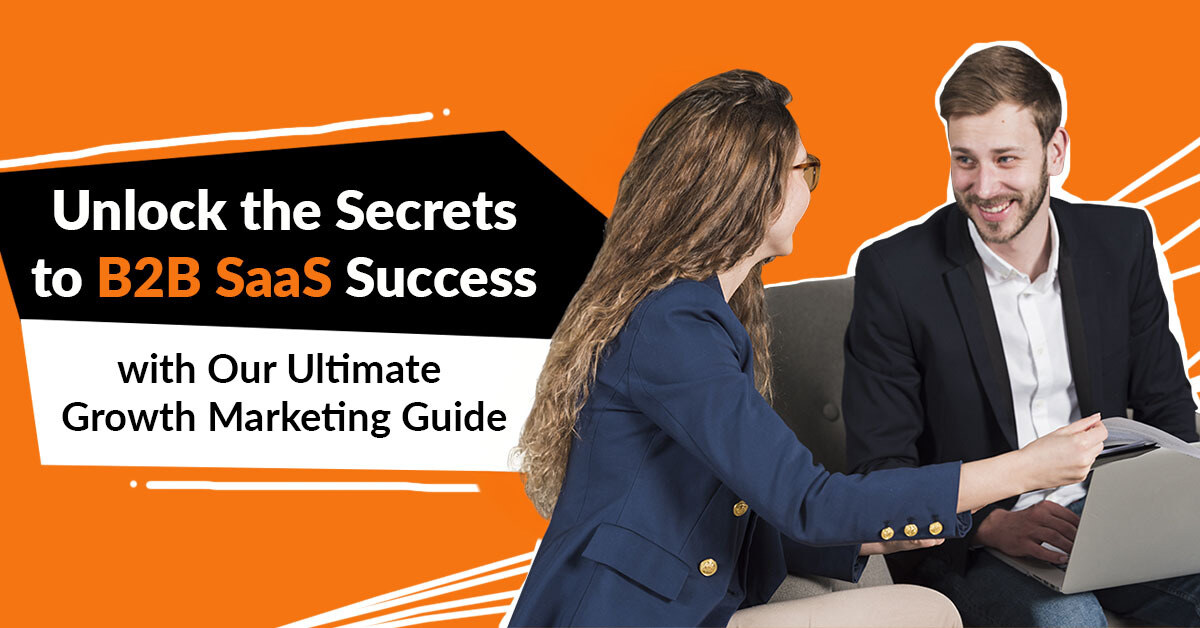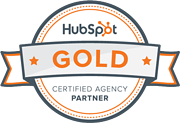The B2B SaaS sector is growing faster than a viral meme, with businesses jumping on the cloud bandwagon to supercharge efficiency, teamwork, and scalability like it’s going out of style. With a projected market value of $1.53 trillion by 2032, fueled by a robust 18.7% annual growth rate from 2024 onward, the landscape is becoming increasingly competitive.
However, this surge in growth brings fierce competition, with new SaaS startups popping up daily. In such a crowded space, excelling requires more than just offering an outstanding product. To succeed, you need a well-structured growth marketing strategy that attracts, converts, and retains customers effectively.
Our guide will break down the essential elements of a winning B2B SaaS growth marketing strategy. Whether you’re a fresh-faced startup aiming to make a splash or an established SaaS powerhouse ready to dominate, we’ve got the no-nonsense tips to help you snag users, fatten up your revenue, and leave your competitors eating your digital dust for years to come.
What is B2B SaaS Growth Marketing?
B2B SaaS growth marketing is a data-driven, full-funnel approach to acquiring, engaging, and retaining business customers for cloud-based software products.
Unlike traditional marketing, which primarily focuses on generating leads, growth marketing emphasizes continuous experimentation, optimization, and scalability to drive sustainable revenue. It involves a combination of organic and paid strategies, such as SEO-driven content marketing, performance-based PPC campaigns, email automation, and product-led growth (PLG) techniques.
The goal is to attract the right audience, nurture them through personalized engagement, and maximize customer lifetime value by reducing churn and increasing retention. Because SaaS businesses thrive on subscriptions, gaining new customers is just half the battle — keeping them happy for the long haul and unlocking upsell opportunities is where the real magic happens.
Using analytics, automation, and deep customer insights, B2B SaaS growth marketing helps businesses grow smartly, increase conversions, and maintain a competitive edge in the ever-changing digital world.
Key Strategies for B2B SaaS Growth Marketing
Crafting a winning B2B SaaS growth marketing strategy means blending inbound and outbound methods, automation, data-driven choices, and a laser focus on customer needs. Here’s a look at the core strategies that drive acquisition, engagement, and loyalty for SaaS businesses.
Define Your Ideal Customer Profile (ICP) & Buyer Personas
These elements help businesses target the right audience, craft personalized messaging, and optimize marketing efforts for higher conversions. If you don’t know who your ideal customers are, your campaigns might end up drawing in the wrong crowd, resulting in wasted marketing dollars and a drop in customer retention.
What is an Ideal Customer Profile (ICP)?
Your Ideal Customer Profile (ICP) is the perfect match — the type of company that stands to gain the most from using your SaaS product. It focuses on firmographic and behavioral characteristics rather than individuals, ensuring that your marketing and sales efforts are directed toward businesses that are the best fit. Key components of an ICP include:
- Industry: The specific sectors where your solution has the highest impact (e.g., fintech, healthcare, ecommerce).
- Company Size: The number of employees or annual revenue range that defines your best customers (e.g., mid-market companies with 100-500 employees).
- Budget: The financial capacity of the company to invest in your SaaS product.
- Pain Points: The common challenges that your solution helps resolve (e.g., inefficient workflows, poor data integration).
- Technology Stack: The tools and software they already use that may integrate with your solution (e.g., CRM platforms, analytics tools).
- Decision-Making Process: The typical buying journey, including stakeholders involved in the purchase decision.
Identifying your ICP lets you sharpen your marketing tactics, directing your efforts at the companies that are most likely to turn into long-term, high-value clients.
What are Buyer Personas?
While ICP focuses on the right businesses, buyer personas represent the individuals within those companies who make purchasing decisions. These personas are semi-fictional profiles based on real customer data and market research, helping SaaS marketers create more personalized and relevant messaging. A buyer persona typically includes:
- Job Titles & Roles: Are they CEOs, CTOs, IT managers, or marketing directors?
- Goals & Objectives: What are their professional priorities, such as increasing efficiency, reducing costs, or improving security?
- Pain Points: What challenges do they face in their daily workflow that your SaaS solution can solve?
- Preferred Communication Channels: Where do they consume content — LinkedIn, industry blogs, webinars, or email newsletters?
- Decision Criteria: What factors influence their decision — pricing, scalability, integrations, or customer support?
Take, for instance, a CTO at a growing fintech firm — they might be on the hunt for a SaaS solution that’s not only scalable and secure but also easily integrates with their current tech setup. On the other hand, a Marketing Director at the same company might be focused on ease of use, reporting capabilities, and automation features. By tailoring your messaging to each persona’s specific needs, you can improve engagement, trust, and ultimately, conversions.
Why ICP & Buyer Personas Matter for SaaS Growth Marketing
By clearly defining both your ICP and buyer personas, your marketing and sales teams can create more targeted, relevant, and personalized campaigns that attract high-value leads. This approach helps:
- Reduce Customer Acquisition Cost (CAC) by focusing on leads that are more likely to convert.
- Improve Customer Lifetime Value (LTV) by ensuring a strong product-market fit.
- Enhance lead nurturing strategies with personalized content and messaging.
- Align marketing, sales, and product teams around a common vision of the ideal customer.
Leverage Content Marketing & SEO for Inbound Growth
Unlike outbound marketing, which relies on direct outreach and paid ads, inbound marketing focuses on creating valuable, educational content that organically draws potential customers to your business. By consistently publishing high-quality, optimized content, SaaS companies can boost brand awareness, establish industry authority, and generate sustainable, cost-effective growth.
Content Marketing: Educate, Engage, and Convert

B2B SaaS buyers conduct extensive research before making a purchase decision, making content marketing a critical tool in the customer journey. By offering valuable, informative, and problem-solving content, SaaS brands can build trust and guide prospects from awareness to conversion. The vast majority — 91% of B2B marketers rely on content marketing to drive their strategies.
Key content formats include:
- Blog Posts & Thought Leadership Articles: Address industry challenges, trends, and best practices to position your company as an authority.
- Case Studies & Success Stories: Showcase real-world customer experiences to build credibility and influence decision-making.
- Whitepapers & eBooks: Offer in-depth insights in exchange for lead contact details, fueling email marketing campaigns.
- Webinars & Video Content: Engage prospects with visual and interactive content that explains product benefits and use cases.
- Interactive Tools & Calculators: Provide practical resources like ROI calculators or free trial estimators to encourage conversions.
By aligning content with different stages of the buyer’s journey, SaaS marketers can nurture leads effectively, reducing friction in the decision-making process.
SEO: Driving Organic Traffic & High-Quality Leads

Search engine optimization boosts your content’s position on Google and other search platforms, driving more visibility and bringing in valuable organic traffic. A well-executed SEO strategy includes:
- Keyword Research & Intent Targeting: Identify and optimize for high-intent, industry-specific keywords that match customer pain points and search behavior.
- On-Page SEO: Optimize titles, meta descriptions, headers, and internal linking to improve search rankings.
- Pillar Pages & Topic Clusters: Structure content around pillar pages (comprehensive guides) and cluster content (supporting blogs) to improve authority.
- Link Building: Earn backlinks from reputable sources through guest blogging, partnerships, and industry collaborations to boost domain authority.
- Technical SEO Enhancements: Improve page speed, mobile-friendliness, structured data, and site security (HTTPS) for better search engine indexing and ranking.
The Long-Term Impact on SaaS Growth
Unlike paid marketing, which stops delivering results once the budget is cut, SaaS content marketing and SEO offer sustainable, long-term growth. A well-optimized blog post or resource page can drive consistent traffic and generate leads for years, making it one of the highest ROI strategies for B2B SaaS companies.
By integrating content marketing and SEO, SaaS brands can establish themselves as trusted industry leaders, attract high-intent prospects, and drive scalable inbound growth — fueling customer acquisition and retention over time.
Implement Account-Based Marketing (ABM) for High-Value Leads

ABM is a targeted strategy that prioritizes engaging high-value accounts, focusing efforts on specific prospects instead of pursuing a broad audience. This method is especially beneficial for B2B SaaS companies aiming to target enterprise clients or key accounts that offer the greatest revenue potential. By concentrating resources on fewer but more qualified accounts, businesses can improve the quality of leads and increase the likelihood of conversion.
An impressive 93% of marketers say their Account-Based Marketing (ABM strategies) have delivered strong results.
In an environment where most B2B SaaS businesses face fierce competition, ABM helps companies differentiate themselves by offering highly relevant, customized messaging that resonates with each prospect. Moreover, ABM accelerates the sales process, leading to shorter sales cycles and quicker deal closures, as the focus is on already-qualified leads that are highly likely to make a purchase.
ABM requires aligning both sales and marketing teams to work together in a coordinated way. Marketing teams craft personalized campaigns and content tailored to the needs of specific decision-makers within the target accounts, while sales teams engage directly with these key individuals. This close collaboration ensures a consistent and highly relevant experience for prospects, leading to stronger relationships and faster deal closures.
The key steps in implementing ABM include identifying the Ideal Customer Profile (ICP), researching key stakeholders within the target accounts, and creating customized, multi-channel campaigns that deliver tailored messaging.
Once target accounts are selected, the next step is to research key decision-makers within those companies. These individuals are typically C-level executives or senior leaders who influence purchasing decisions. By understanding their specific pain points and objectives, SaaS companies can tailor their marketing campaigns to speak directly to their concerns, providing solutions that align with their business needs.
ABM campaigns can use a variety of touchpoints, such as personalized emails, LinkedIn ads, and targeted content, to engage decision-makers effectively. By zeroing in on the right targets, this strategy drives higher conversions, greater ROI, and streamlines the sales cycle. The use of CRM tools and marketing automation allows both marketing and sales teams to track engagement and adjust their strategy in real time, ensuring a consistent and efficient approach to nurturing and converting high-value leads.
Optimize Paid Acquisition Channels (Google Ads, LinkedIn Ads & Retargeting)
Optimizing paid acquisition channels like Google Ads, LinkedIn Ads, and Retargeting is a critical strategy for B2B SaaS growth marketing, as these channels allow businesses to reach highly targeted, high-intent audiences. For SaaS companies, paid ads are an effective way to generate quality leads and accelerate growth by driving targeted traffic to landing pages, product demos, or free trials.
- Google Ads enables SaaS companies to capture search intent by targeting specific keywords related to their solutions, making it easier to attract leads who are actively seeking similar products. To make the most of Google Ads, businesses should blend keyword research, ad copy experimentation, and conversion tracking to ensure their campaigns attract the right audience and boost conversion rates.

- LinkedIn Ads provide an ideal platform for targeting decision-makers in businesses, as it’s a network rich with professionals from various industries. LinkedIn’s robust targeting options allow SaaS marketers to narrow down audiences by job title, company size, industry, and more. Optimizing LinkedIn Ads involves creating tailored content and using A/B testing to identify the most effective messaging and offers.
- Retargeting focuses on bringing back visitors who previously interacted with your website but didn't convert. By showing targeted ads to these potential leads across various platforms, SaaS companies can stay top of mind and encourage users to return and complete actions, like signing up for a demo or downloading a resource. Optimizing retargeting efforts involves segmenting audiences based on their behavior on the site, crafting personalized ad creatives, and ensuring proper frequency capping to avoid ad fatigue.
By consistently optimizing and testing these paid channels, B2B SaaS companies can lower their cost-per-acquisition (CPA), boost return on ad spend (ROAS), and enhance lead quality, bringing more qualified prospects into the sales funnel.
Use Email Marketing & Automation for Lead Nurturing
Email marketing and automation play a crucial role in nurturing B2B SaaS leads by delivering personalized, timely, and relevant content throughout the buyer's journey. Instead of relying on cold outreach, SaaS companies can use automated email sequences to educate prospects, address pain points, and guide them toward a purchase decision.
With segmentation and personalization, businesses can tailor emails based on user behavior, interests, and lifecycle stage. Drip campaigns, triggered emails, and follow-ups keep leads engaged, while automation ensures consistent communication without manual effort.
Linking email marketing with CRM and automation tools allows SaaS companies to monitor engagement, fine-tune email campaigns, and boost conversion rates. This strategy strengthens relationships, shortens sales cycles, and drives higher customer retention rates.
Leverage Product-Led Growth (PLG) Strategies
Product-Led Growth (PLG) focuses on using the product as the primary driver for attracting, retaining, and growing a customer base. Instead of leaning too much on traditional sales tactics, SaaS companies let users try before they buy with free trials, freemium options, and easy self-service onboarding, letting them see the product's worth for themselves. This approach reduces friction in the sales process and accelerates conversions.
PLG focuses on user experience and engagement, ensuring that the product is intuitive, solves key pain points, and encourages organic adoption. Features like in-app tutorials, AI-driven recommendations, and seamless integrations help users derive value quickly, increasing retention and customer lifetime value.
By leveraging data-driven insights and user behavior analytics, SaaS businesses can optimize onboarding, identify upsell opportunities, and drive growth through referrals and network effects. PLG not only reduces customer acquisition costs but also creates a scalable, sustainable growth engine for B2B SaaS companies.
Improve Customer Retention & Reduce Churn
Customer retention is just as important as acquisition. Reducing churn ensures long-term revenue growth and strengthens customer relationships. To achieve this, businesses must focus on delivering continuous value, providing proactive support, and maintaining strong engagement with users.
Key strategies include personalized onboarding, regular check-ins, and customer education through webinars, tutorials, and knowledge bases. SaaS companies should also leverage customer feedback to address pain points and enhance product features that improve user experience.
By implementing loyalty programs, proactive support, and usage-based insights, businesses can anticipate churn risks and take corrective action before customers leave. A strong customer success team and effective communication foster long-term relationships, ensuring higher retention and increased customer lifetime value (CLV).
Track Performance with Data Analytics & KPIs
Tracking key performance indicators (KPIs) and leveraging data analytics is essential for optimizing B2B SaaS growth marketing strategies. By continuously monitoring metrics such as customer acquisition cost, lifetime value, churn rate, and conversion rates, businesses can assess campaign effectiveness and identify areas for improvement.
Google Analytics, CRM dashboards, and marketing automation platforms can help SaaS companies gain insights into:
- User behavior
- Sales funnel performance
- Engagement trends
Data-driven decision-making enables marketers to refine strategies, allocate budgets effectively, and enhance customer experiences.
Regular performance tracking ensures that marketing efforts remain aligned with business goals, allowing SaaS companies to scale efficiently, improve ROI, and drive sustainable growth.
Essential Foundations for a Successful Growth Marketing Strategy
Before implementing a B2B SaaS growth marketing strategy, certain foundational elements must be in place to ensure success. These preconditions help create a scalable, data-driven approach to acquiring and retaining customers.
- Product-Market Fit (PMF): A SaaS product must solve a real problem for a clearly defined audience. Without PMF, growth strategies will struggle to deliver sustainable results.
- Strong Data Infrastructure: Growth marketing relies on tracking and analyzing user behavior. Businesses need proper analytics tools (Google Analytics, CRM, marketing automation) to measure performance and optimize strategies.
- Aligned Sales & Marketing Teams: A seamless collaboration between sales and marketing ensures smooth lead nurturing and conversion processes. Both teams should share insights and work toward common growth goals.
- Scalable Acquisition Channels: Having tested and proven marketing channels (SEO, PPC, social media, referrals) ensures that scaling efforts drive real business impact.
- Retention & Engagement Strategy: Growth isn’t just about acquiring new customers — it’s also about keeping them. A solid retention plan with customer success initiatives is crucial for long-term growth.
Final Thoughts
Driving growth in the B2B SaaS space requires a strategic mix of inbound and outbound marketing, smart automation, tailored customer experiences, and data-backed insights. By combining organic reach with targeted paid campaigns, businesses can attract, convert, and retain high-value customers more effectively.
By leveraging SEO, content marketing, and thought leadership alongside targeted paid campaigns, your business can attract high-quality leads while optimizing acquisition costs. Incorporating automation and personalization ensures a seamless customer journey, enhancing engagement and long-term loyalty. By constantly reviewing data and improving strategies, your SaaS company can
- Retain customers
- Grow revenue
- Stay competitive in a rapidly changing market
You can also reach out to a B2B SaaS marketing expert to help you refine and execute these strategies for maximum impact.










